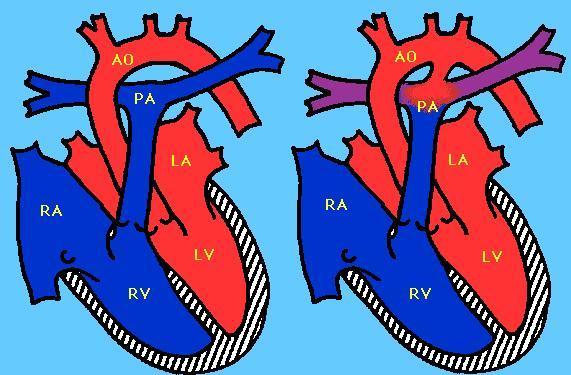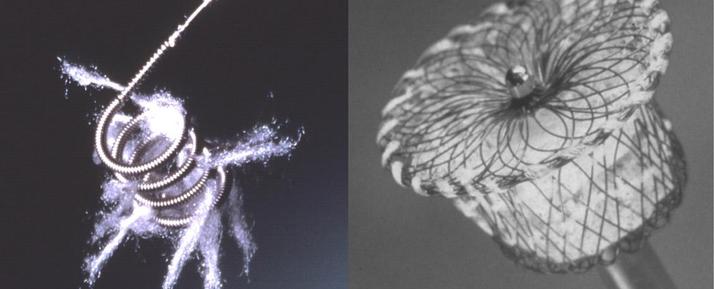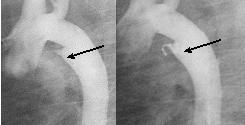Transcutaneous closure of PDA
Your child is diagnosed with a patent ductus arteriosus (PDA), which is a communication between the two main arteries that arise from the heart, the aorta and the pulmonary artery.
The ductus arteriosus is a vessel that is needed in fetal life and usually closes spontaneously within the first few days after birth.
- If the PDA has not closed spontaneously and re-circulates a significant amount of blood, it will need to be closed surgically (in very small premature babies), or most commonly, percutaneously. If it is left open, it may cause a significant burden on the heart, cardiomegaly or pulmonary hypertension.
- In the past, the only way to close this communication was surgical with access from a left thoracotomy. The surgical method is completely safe but leaves a permanent scar and entails hospitalization for 5-7 days.


In the last 15 to 20 years, PDAs are closed with devices (left photo). The child must usually weigh > 5 kg. If the communication is large, it is possible to give diuretics and postpone the catheterization until the child’s weight reaches the above levels.
The procedure
- Catheterisation is performed under general anesthesia by placing a small sheath (plastic catheter) in the child’s femoral artery and vein (at the top of the foot in the nappy area).
- The size and shape of the ductus arteriosus is checked by angiography, with which the cardiologist decides which type of device should be used.
- Positioning of the device is performed under X-ray guidance and at the end of the procedure repeat angiography is needed to establish complete closure of the PDA and no interfernec with the neighboring structures. (photos below).
- The child usually stays in hospital for one night after surgery and the device is checked by echocardiography and a CXR the following day.
Transcatheter closure of PDA is a safe alternative to the surgical method and the most commonly applied worldwide.
PDA closure with a device (Amplatzer PDA device).


PDA closure with a device
Possible complications
Transcatheter closure of PDA is a safe alternative to the surgical method and the most commonly applied worldwide.

